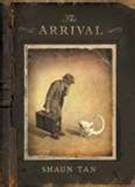Welcome to the International Academy School Library! As an authorized IB World School, we offer the MYP and DP to all students in grades 9-12. We are a public school. The library is run by Mrs. Janek, a certified school librarian. This blog is a place to highlight book reviews, post interesting articles, write about school libraries and share best practices. www.iatoday.org
Thursday, June 11, 2009
Print vs. other sources
There are some assignments where we limit students to using only our Gale Databases. It sort of limits the overwhelming amount of information. Students don't have to sift as long for the good stuff, but they can focus on the information/content. This is preparing them for college because I think students should head off to college with a basic understanding of what databases are and how to navigate them. They will refine this skill by the time the graduate from college.
http://galesites.com/menu/index.php?loc=lom_inac
Here is a good blog article by another librarian, which started my thinking:
http://theunquietlibrarian.wordpress.com/2009/06/09/debating-the-requirement-of-print-books-as-information-sources-for-research/
An article on format bigotry :) http://doug-johnson.squarespace.com/blue-skunk-blog/2009/2/24/format-bigotry.html
08-09 School Year at IA East

The 08-09 school year was a whirlwind of activity for the IA East library. First, several summer months were spent creating a library appropriate for the 9th grade International Academy curriculum. Books were ready for circulation a couple of weeks into the school year. A non-fiction collection was established to support classroom teachers. A fiction collection was established to reflect the IB Learner Profile, the IB Prescribed World Literature List, along with popular Young Adult fiction for our students to enjoy.
Tri-Campus Unity was goal for the three IA campuses. One of the first experiences our IA East 9th graders had was to collaborate on a Google Doc with 9th graders from each campus. It was a quick activity to reflect on their Freshmen Orientation and share with each other their IA expectations and perceived challenges. This was a great way to integrate technology into a reflective activity and it was finished before the official 1st day of school!
During the first few months of school, our 9th graders were taught (by their Media Specialist) how to evaluate websites, fundamentals of MLA documentation, how to avoid plagiarism, how to use academic research databases through our International Academy Virtual Library portal, how to create/use note cards and graphic organizers for research. We also had a lesson about the ethical issues surrounding academic malpractice and I tied in the IB Learner Profile to this lesson. In addition to this, students were expected to use Moodle for all of their classes. Students were assigned homework that entailed using the Moodle forums, wikis, surveys, on-line quizzes and keeping track of their homework assignments. As the year progressed, so did the level of technology integration. Students worked with their Media Specialist to create interactive wikis; embedding html code, images, .pdf documents, while using our research databases and ebooks. Students created digital stories about themselves for their World Literature class using either Windows Movie Maker or PhotoStory. Our Spanish Culture classes researched ancient civilizations in the databases and then created newsletters in Microsoft Publisher. Their creativity was inspiring.
To promote reading and the IB Learner Profile, every student at IA East participated in The Arrival activity. The Arrival, by Shaun Tan allowed students to reflect on the immigrant experience through the different lenses of the IB Hexagon and apply various aspects of the Learner Profile to the protagonist. The final highlight of our year was the opportunity to meet the author Todd Strasser and get a glimpse into the world of publishing. It was a challenging but rewarding year at the International Academy East Media Center.